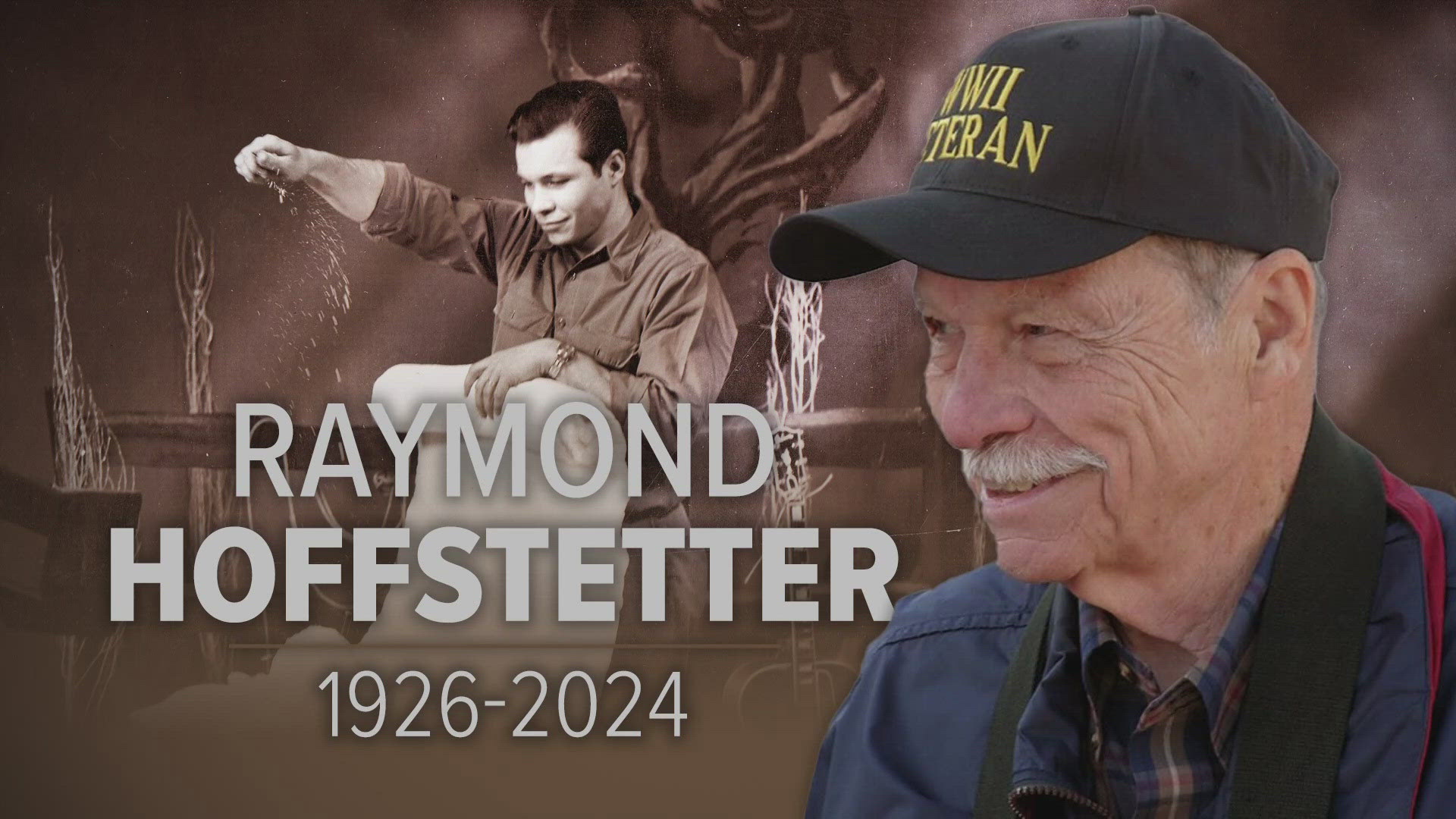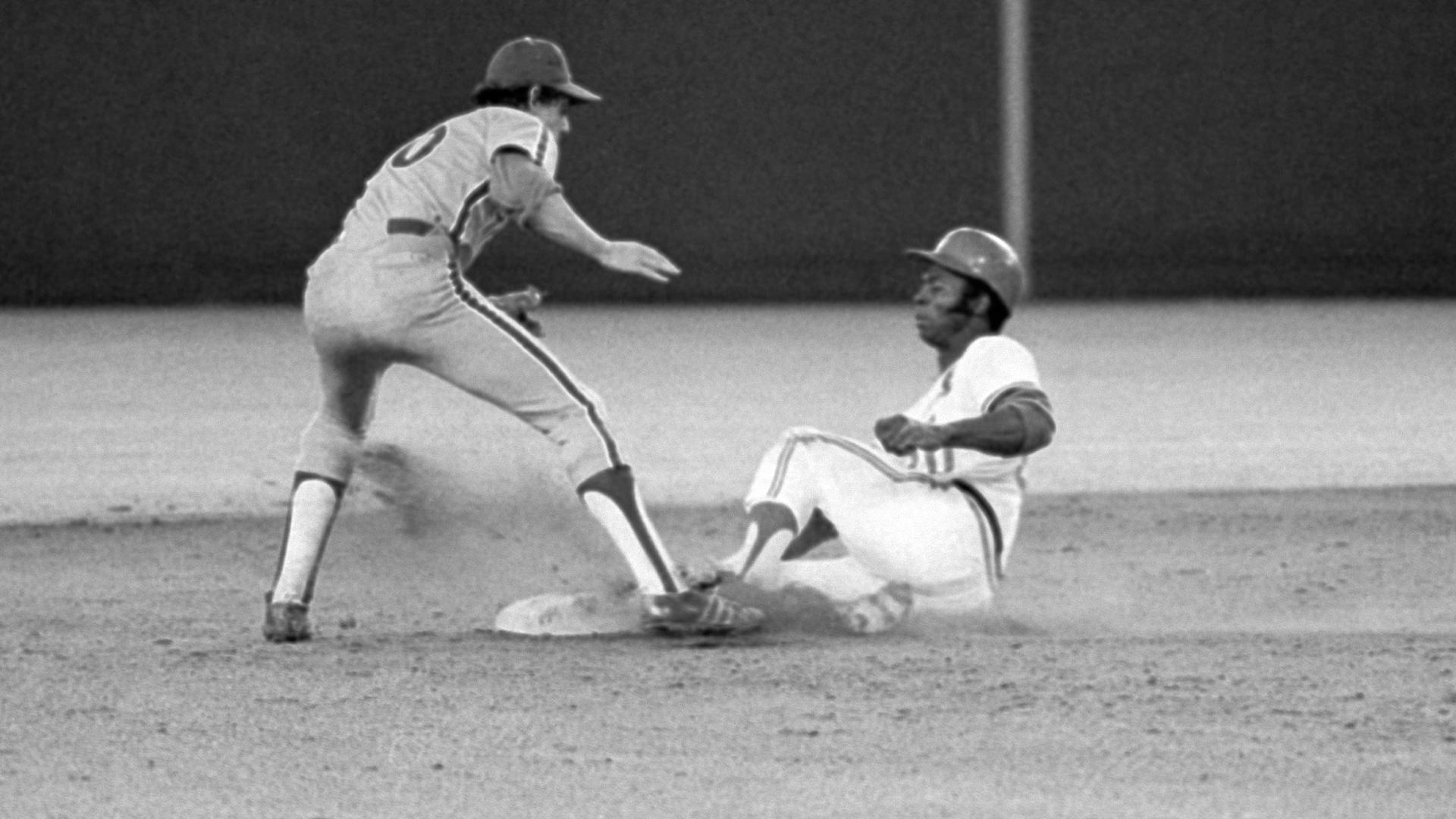ST. LOUIS — Raymond Hoffstetter, a pioneer of television whose career took him from the streets of St. Louis to the deserts of Saudi Arabia and whose on-field video of St. Louis Cardinals leftfielder Lou Brock breaking the stolen base record in a single season in 1974 is immortalized in the Baseball Hall of Fame, died Sunday at his home in Crestwood, Missouri. He was 98.
His son, Steven Bliss, confirmed his death. He said his father had been in hospice care for the past several days.
“I can’t believe sometimes all of the things that have happened and places that (I wouldn't have) seen and done if it hadn’t been for television. There’s been nothing like it in history. I can’t explain how far along it’s come, and it’s not done yet,” Hoffstetter said in February when he was inducted into the KSDK Hall of Fame as part of its inaugural class. “I hope that I’ve been as good to television and Channel 5 as it has been good to me.”


For nearly 30 minutes, Hoffstetter captivated current and former KSDK employees with his wit and charm, and stories about his remarkable career.
“In February 1948, when I walked into the Channel 5 studios for the very first day, I said, ‘This is for me. This is what I want to do.’ Back in those days, there were no schools, no classes. Everybody learned as they went along,” he said.
Hoffstetter was hired as a stagehand by KSD-TV when it was just the ninth television station in the United States — the sixth, he pointed out, if experimental stations operated by companies like RCA or the Allen B. DuMont Laboratories weren’t counted.
“We were the ones that got into a home, not into a lab someplace,” he joked.
KSDK chief photojournalist Randy Schwentker, who inducted Hoffstetter, credited him with his decision in 1990 to move from ingesting incoming video feeds to working in the field as a photojournalist.
“At this point, I’m watching all of these satellite feeds. Ray has a couple more years before he retires. One day I’m sitting there getting this feed, and it’s Ray shooting from the USS Missouri on its way from California to Hawaii. This was the story of a lifetime.
“I saw this and I was like, ‘I’ve got to get out of this little room and get out and start shooting.’ And within the next six to eight months, I was out on the street. It was stories like this that came in that you saw people out and about and really living the dream of doing storytelling,” Schwentker said.
‘Everybody wanted to do their part to win the war’
Raymond Anthony Hoffstetter was born on Sept. 20, 1926, in St. Louis to Oliver and Irene Hoffstetter. He was the second of three children. His brother, Oliver Jr., was born in 1924 and his sister, Jeannine, was born in 1931.
Hoffstetter attended Gardenville Elementary School in the Princeton Heights neighborhood and later Cleveland High School in Dutchtown from which he graduated in 1944 at the age of 17.

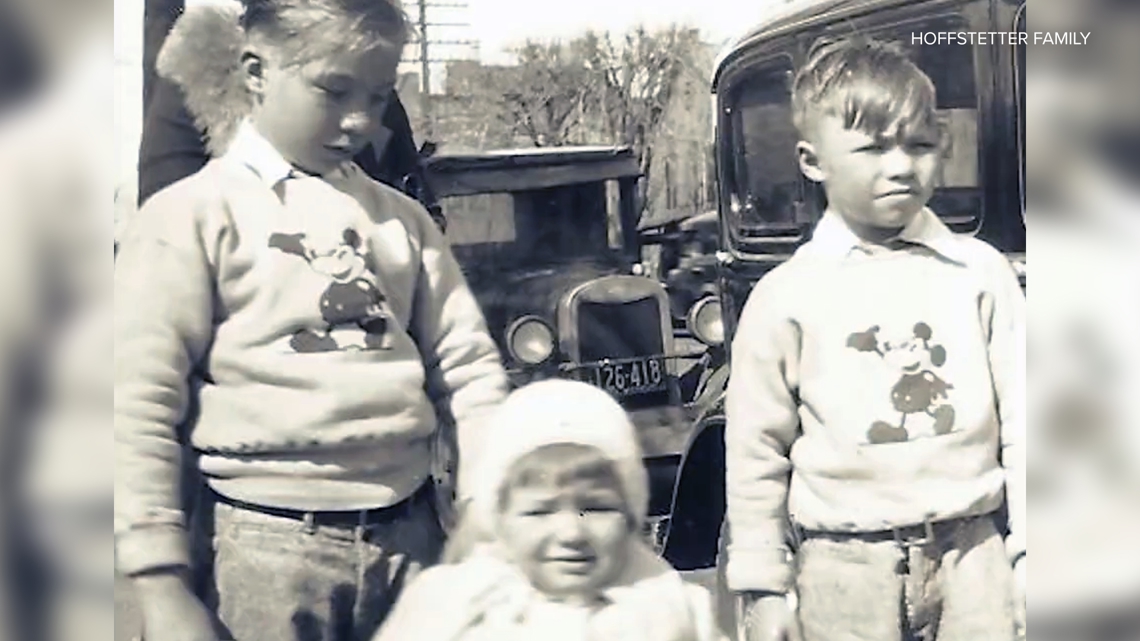
“Back then in World War II days, everybody wanted to do their part to win the war. So I graduated on June 10, and my best friend and I wanted to join the Navy. We were both 17, so we had to get our parents’ permission,” he said.
The two went to enlist at Jefferson Barracks. Hoffstetter was accepted into the military; his friend, who had poor eyesight and wore glasses, was not.
Hoffstetter attended bootcamp at Farragut Naval Training Station in Idaho before he was sent to the U.S. Naval Training Center in Gulfport, Mississippi. He graduated as one of the top ten students in his class.
Seamen who graduated near the top of their class were sometimes able to choose the type of vessel they would serve. Always interested in flying, Hoffstetter wanted to serve aboard a blimp that was part of the Navy’s lighter-than-air program.
“Nobody wants to be in those big slow targets up there,” Hoffstetter recalled a Naval officer telling him, all but assuring he would be selected to man an airship to seek out German submarines off the east coast.
There was one problem.
Germany surrendered on May 8, 1945; Hoffstetter graduated six days later.

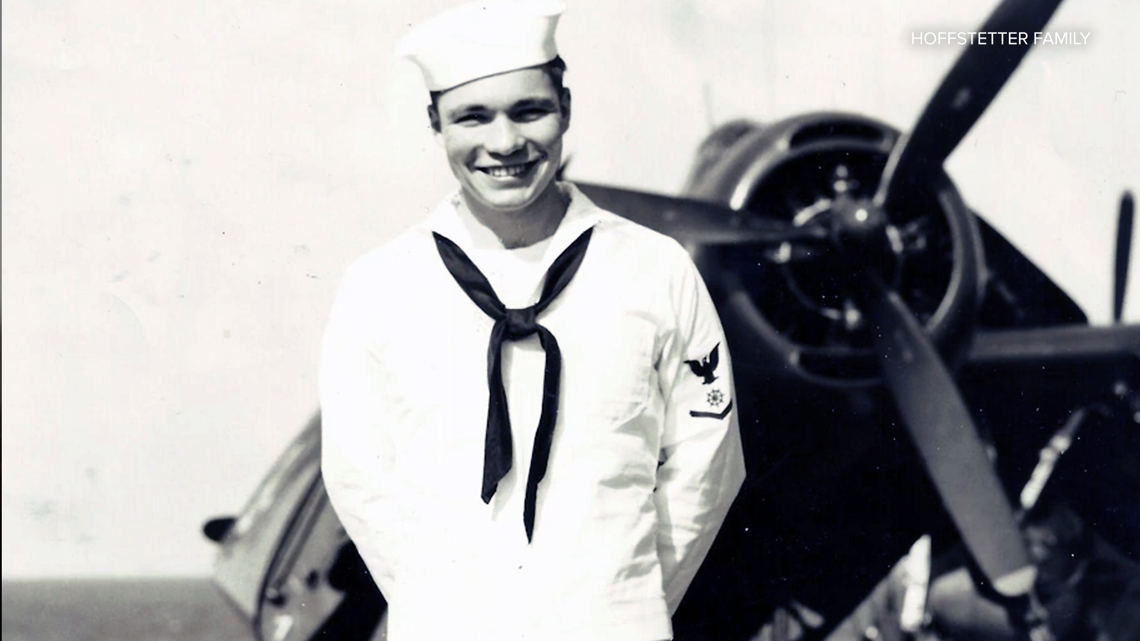
He was instead assigned to the USS Mustin, a destroyer that patrolled the waters off the Aleutian Islands, where the military was stockpiling equipment in preparation for the invasion of Japan.
While Hoffstetter was onboard the ship, he learned that the U.S. had dropped atomic bombs on the Japanese cities of Hiroshima and Nagasaki.
Following Japan’s surrender, the USS Mustin became part of the post-war occupation fleet assigned to Ominato, a Japanese naval base.
The destroyer made several trips to Tokyo Bay to collect military mail and Hoffstetter, who had top-secret clearance, went on shore to pick it up.
With the war over and Hoffstetter on inactive duty, he returned to St. Louis, unsure of what he wanted to do with his life.
He joined the International Alliance of Theatrical Stage Employees Local 6, which his grandfather founded in 1890, and worked building sets and painting at The Muny.
‘I floated out of that building’
While Hoffstetter was at the IATSE union hall in February 1948, he learned that KSD-TV, St. Louis’ only television station at the time, was looking for another stagehand.
“The business agent said, ‘Go down to the television station Sunday at 4 o’clock.’”
Hoffstetter reported for duty and was asked to come back the next day at 10 a.m.

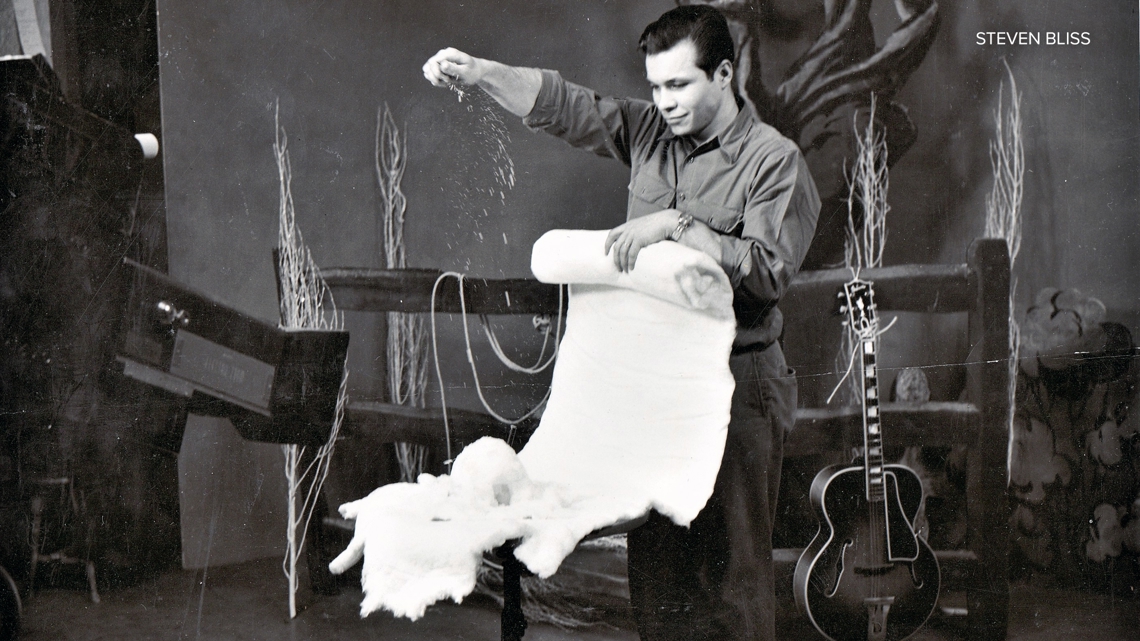
“I would work four hours Sunday (and) eight hours Monday, and I’d maybe get a job in between. But I really liked getting in on the ground floor of television,” he said. “In May of 1948, the supervisor called me down and said, ‘We're going to go from five to seven days a week. We want to hire you permanently.’ And I floated out of that building. I had a permanent job, and it was something I loved doing."
Hoffstetter worked as a stagehand for 18 years on programs like "The Charlotte Peters Show," "Corky the Clown" and "Wrangler's Club" until a conversation with Frank Otterson, a sound technician for the news department, would lead to his next assignment as the station continued its expansion.
“(Frank said) they want another guy to be a sound man with the group. He said, ‘I just really can't come up with somebody … I'd like to be here. Can you?’
“And I said, ‘Yeah, I can think of one.’
“He said, ‘Who?’
“I said, ‘Me.’”
“Two days later, the news director came out and said, ‘I understand you want to be with us. … If you want the job, it's yours,'” Hoffstetter said.

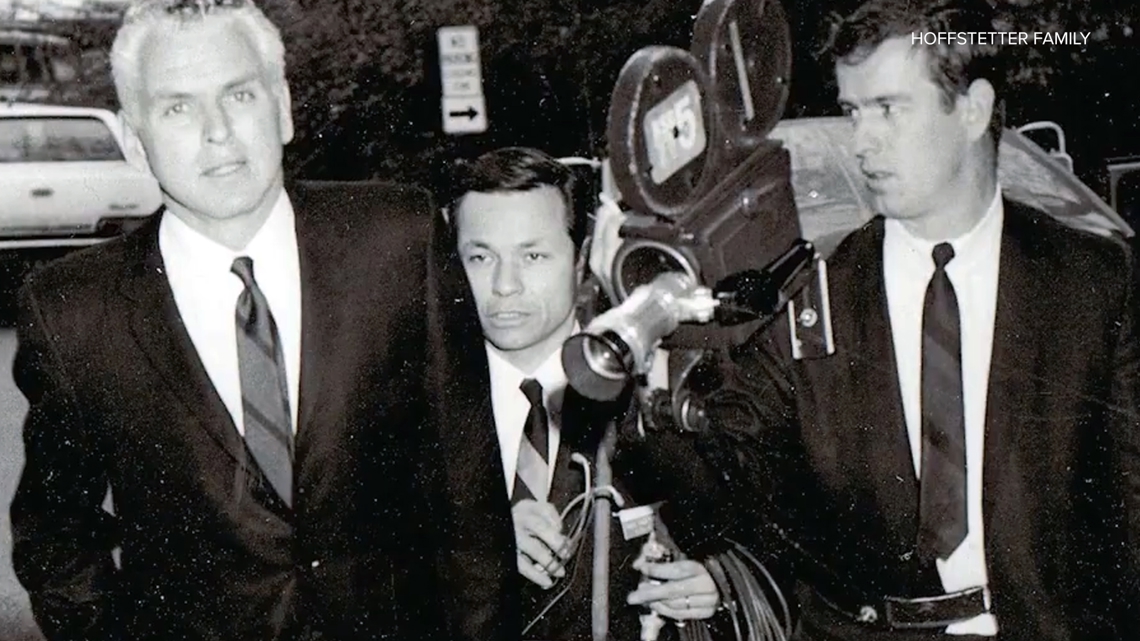
Hoffstetter served as a sound technician until the early 1970s when general manager Ray Karpowicz told him the station was getting new cameras that were able to record sound.
“He said, ‘We're going to expand, and we're going to have to add a cameraman. And we want you to do that.’ So that was it. I became a film cameraman.”
Of the thousands and thousands of feet of film Hoffstetter shot during his nearly seven-decade career at KSDK, there are 15 seconds that captured a feat many thought impossible.
“Lou Brock was on the verge of breaking the stolen base record; 104 was the record held by Maury Wills. I walked into (Busch Stadium) and almost all of the cameras were up in the press box. I told (sound technician) Bob Kirchhoefer, ‘Let’s stay down here.’ We were right by third base.”
In the first inning of the Cardinals game against the Philadelphia Phillies on Sept. 10, 1974, Brock stole his 104th base of the season.
“I told Bob, ‘If he steals 105, we’re going down on the field.’
“He said, ‘We can’t … .’
“I said, ‘We’re going down on the field.’
"So he stole it and I got it and the sign flashing ‘105 Lou, 105 Lou.’”
In the early 2000s, a trip to the Baseball Hall of Fame in Cooperstown, New York, with his wife, Muriel, gave Hoffstetter an unexpected surprise.
“One area is all about Cardinals. And of course, there’s a pillar with the shoes Lou Brock wore, the base he stole for 105 and there’s a screen showing all the steals he made. And up came my picture. So I’m in the Hall of Fame in a roundabout way,” a beaming Hoffstetter said during his KSDK Hall of Fame induction speech.
Hoffstetter said other memorable stories he covered while at KSDK included a trip to Saudi Arabia alongside anchor Dick Ford and producer Gary Furlow in 1990 during Operation Desert Shield, and traveling from California to Hawaii aboard the USS Missouri a year later for the 50th anniversary of the Japanese attack on Pearl Harbor.

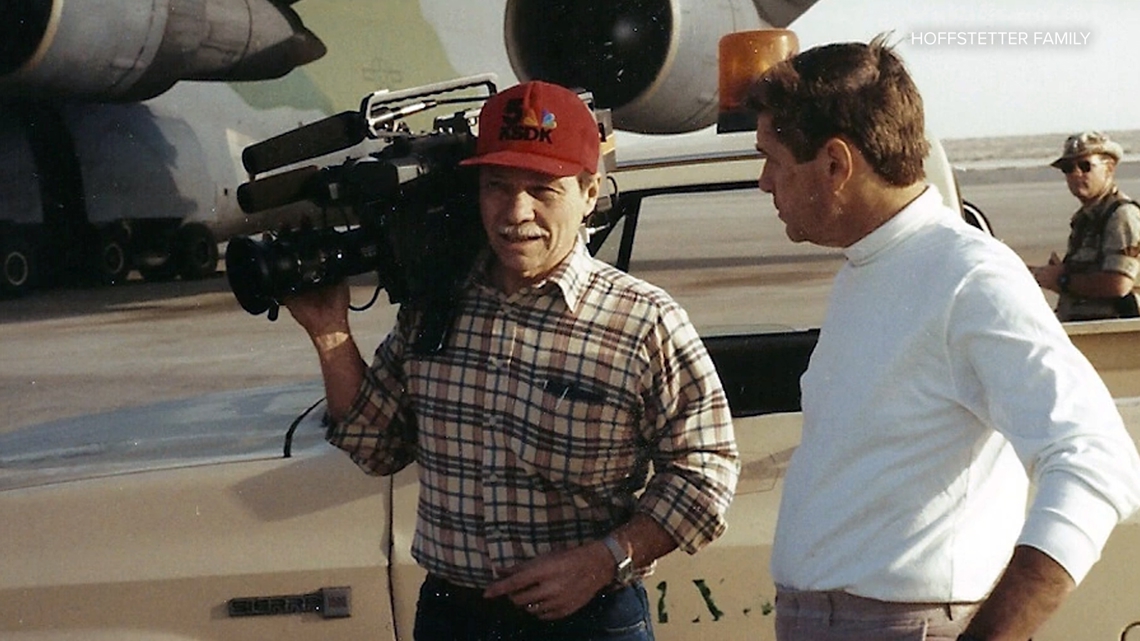
In 2007, Hoffstetter was inducted into the Gold Circle of the National Academy of Television Arts and Sciences Mid-America Chapter. The honor recognizes people who have made significant contributions to television for 50 years or more. And in 2011, Hoffstetter was inducted into the St. Louis Media History Foundation Hall of Fame.
After he retired from KSDK, Hoffstetter volunteered at the Sappington House Museum in Crestwood, where he produced a video tour of the second floor of the museum for people with accessibility issues. He and his wife also served as tutors helping students at Long Elementary School improve their reading skills.
In recognition of his extraordinary life and contributions to society, Crestwood celebrated "Ray Hoffstetter Day" in the city on June 3, 2022.
Hoffstetter is survived by his sister Jeannine Navratil, children Steven Bliss and Sandra Negash, five grandchildren and six great-grandchildren. His wife passed away in December 2013. They were married for more than 63 years.
"Since my mom passed away 11 years ago, I've called him every night at 9:30. I will miss him more than I have words to say. I have a perspective that no one had of him because we became so close. It's almost indistinguishable the differences between us," Bliss said. "I've learned through all of this to never take anything for granted because time is not on our side. Moments matter, as insignificant as some of them may be."
Visitation for Hoffstetter was scheduled for Friday, Oct. 18 from 3-9 p.m. at Kutis Funeral Home, 10151 Gravois Rd., St. Louis and on Saturday, Oct. 19 from 1-2 p.m. at St. Philip's United Church of Christ, 10708 Lavinia Rd., St. Louis. A funeral service will follow.
Hoffstetter will be buried with full military honors on Monday, Oct. 21 at 9:30 a.m. at Jefferson Barracks National Cemetery in south St. Louis County.
The family asks that in lieu of flowers, contributions in Hoffstetter's memory be made to St. Philip's United Church of Christ Continuity Fund or the Historic Sappington House Board Memorial Fund.
Friends, colleagues share their remembrances
"My schedule didn’t often match Ray’s, but it was my good luck when it did. In a grimy, dusty, curmudgeonly environment, Ray was a breath of fresh air. He was always cordial, gentlemanly and smiling — surely one of the very best men to truly shape the early days of St. Louis television.
"In a business where people are often stressed and rushed, and too frequently neglect common courtesies, Ray could be counted on for a warm greeting and big smile. He was among those pioneers who built KSDK into a legacy station where we were proud to work and tried to maintain the high standards set by our predecessors."
—Karen Foss
Former KSDK anchor/reporter
"You know, thinking back on Ray Hoffstetter really brings a smile to my face. This guy was KSDK through and through. I remember when I first started at the station, it felt like Ray had always been there — like he came with the building or something. Every time I needed to dig up an old tape, I'd head to the archive room, and there he'd be, ready with a friendly face and an even friendlier story. Ray wasn't just an employee; he was the heart of KSDK, making everyone feel at home with his warmth and humor, and the station was lucky to have him for so long."
— Mike Bush
KSDK anchor/reporter
“When I started at KSD-TV in 1979, Ray had already worked at the station for 31 years. I didn’t think much about it then, but Ray was one of the pioneers who created local television and an eyewitness to every technological change from 1948 on. What I did notice at the time was Ray’s positive spirit; everyone liked him and I always enjoyed working with him when he shot one of my sports stories in the 1980s. It was so fitting that Ray was an inaugural member of KSDK’s brand new Hall of Fame. Ray stole the show with his razor sharp memory and sense of humor, telling story after story."
—Art Holliday
KSDK news director and former anchor/reporter
“Ray’s spirit of generosity is something I will never forget. An accomplished veteran, Ray was always willing to offer guidance to those of us just starting our careers at KSDK in the 1980s. That inspired many of us to emulate his example. Ray touched so many lives in such positive ways. I’m grateful to have worked with him."
—Jennifer Blome
Former KSDK anchor/reporter
“Back in those days, everything was done with film. When I talk with young people today, and we put these SD cards in cameras and we go out and shoot, they’re interviewing people for 17 minutes (or) 24 minutes. Back in the day, Ray shot on a camera with a spool of film that lasted about 14 minutes. I don’t think there was anyone here who touched each one of (our video) technologies. Every eight to 10 years, we’d change technology, and Ray was there for all of that.”
—Randy Schwentker
KSDK chief photojournalist
"I had the honor and pleasure to be Ray's boss from 1984-1991, and by that time he was in his 60s and had done everything imaginable in television from shooting news film to shooting and editing tape for promos.
"The 1980s and early 1990s were a very busy time for us, with the Cardinals having great success, and a new boss at the station, Bill Bolster, who demanded so much from me and from every employee. As you might expect, Ray was not only able to keep up with every harebrained idea Bill or I had, but he embraced it. From 'Show Me 5' to 'The Heat is On,' the station was a dominant No. 1, and Ray was such a big part of it.
"I had lost my dad at a very young age and had never supervised anyone with Ray's experience. He never meant to, but Ray provided me with the wisdom and balance that I needed to be a good manager, but I never got to say that to him.
"We loved his stories about working in burlesque houses in 1930s St. Louis and all the great news stories he covered over the years. He loved his wife, Muriel, KSDK, the Cardinals and beer — and not necessarily in that order. The last time I saw Ray was on a video chat a few years ago, and he looked the same — always smiling and happy.
"From my first day, Ray was welcoming and always had a sense of fun about him, even as the average age of our department got younger. He was always the North Star and a beam of professional sunshine. What a joy. What a man."
—Rich Brase
Former KSDK director of programming and creative services
"Ray was a kind, caring gentleman. Always bright and positive, a pleasure to work with. We traveled all over the state and the country for KSDK. I don't know how many shows and projects we worked on together, but he made each production easier. Just a terrific guy. Saddened with his passing,"
—Gary Furlow
Former KSDK director of special projects

